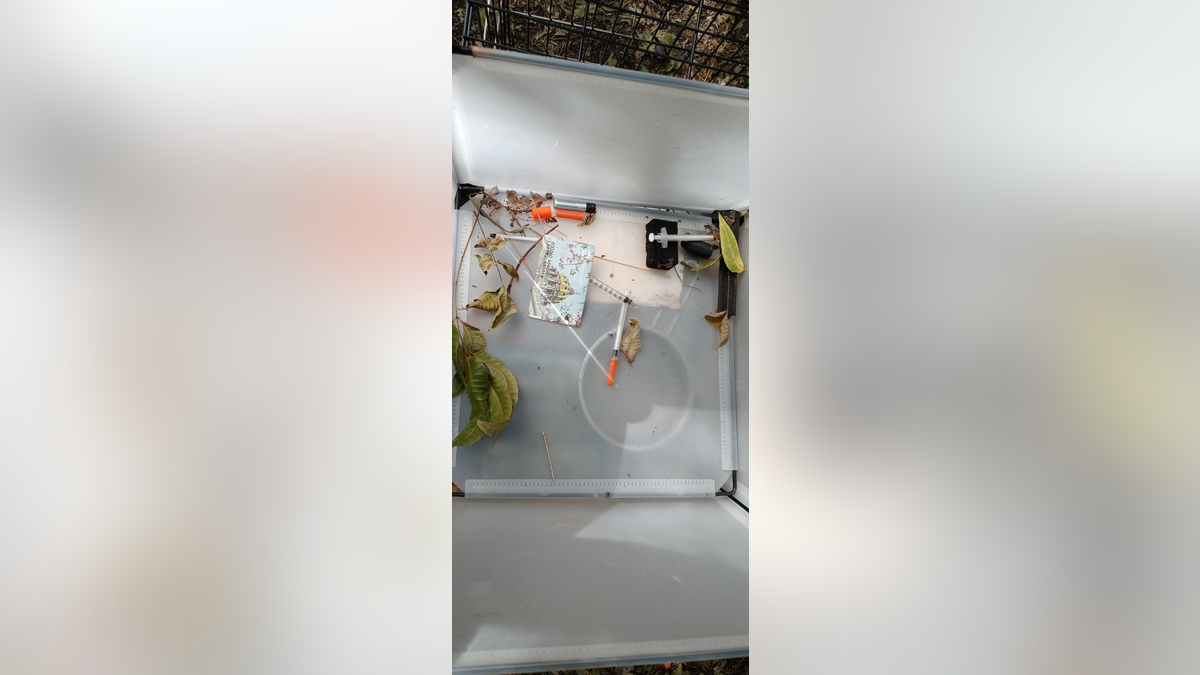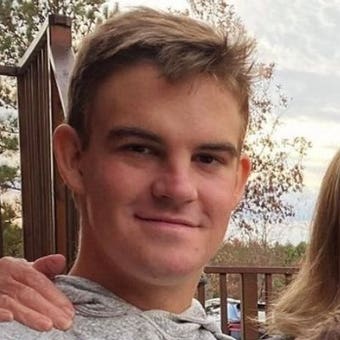Texas city flooded with homelessness
Encampments on the rise in Austin. Fox News' Lawrence Jones speaks with concerned residents about the conditions.
In his final State of the City address Aug. 25, after eight years in office, Austin Mayor Steve Adler said, "Austin is poised to be the first major American city to end homelessness."
While tents have disappeared downtown over the past year after voters reinstated Prop B, which banned camping in public places, many residents feel the city has just forced the most vulnerable out of public view.
For Jamie Hammonds of Austin, the issue is personal. He slept on church steps near the state capitol and worked as a day laborer for about four months in 2013, saving up enough money until he could pull himself out of homelessness.
Now, he says, the city is just glossing over the problem.
PORTLAND RESIDENT DEMANDS ACTION ON HOMELESS CRISIS AS FAMILIES FLEE
"They cleaned the homeless encampments up in public view, but all they succeeded in doing is pushing the homeless to where you can't see it, back into the wooded areas," Hammonds told Fox News Digital.
A big problem with the homeless crisis in Austin is transparency. No one knows exactly how many people are unhoused in 2022. The last point-in-time count, a survey of people experiencing homelessness, was done in January 2020 and identified 2,506 homeless people. An estimate by the Austin Ending Community Homelessness Coalition (ECHO) last year found about 3,160 people were homeless.
The lack of transparency motivated Hammonds to set out and document the homeless crisis himself, posting photos and videos of the dozens of homeless encampments throughout the city on Twitter and creating a map that shows the extent of the problem.
His project kicked into high gear earlier this year when he saw a group of children walking out of woods littered with trash and needles near Great Hills, a neighborhood in northwest Austin.
"I have a soft spot on my heart for children, for one, and that's what really got me, seeing those children in that mess," Hammonds told Fox. "And the other part is the homeless, and seeing them suffer. That's what kicked it off."
Clinton Rarey, a candidate for Austin City Council, pointed the blame at Mayor Adler and other city leaders for throwing money at the problem without clear solutions.
"[Adler] is using their same playbook that they use in California, that they ignore the problem and they just keep asking for more and more money each year," Rarey told Fox News Digital.
Austin allocated $79 million to the homeless crisis in next year's budget, including $4.8 million for cleaning up encampments.
That's on par with the $179 million the city put toward combating homelessness from fiscal year 2019 to 2021, but questions have swirled about how efficiently those tax dollars are being used.

A draft of the map Jamie Hammonds is working on to document homeless encampments in Austin. (Jamie Hammonds)
Council Member Mackenzie Kelly requested an audit of money spent on homelessness in the past few years, and the city couldn't provide a full picture.
"There is no complete inventory of agreements and associated spending for the City’s homelessness assistance efforts, and we could not determine the number of these agreements due to limitations with available data," the city auditor wrote in a report last September.
LA CITY COUNCIL GREENLIGHTS BAN ON HOMELESS ENCAMPMENTS 500 FEET FROM SCHOOLS, DAYCARE CENTERS
For Austinites who may have not been aware of how bad the homeless crisis has gotten, heavy rainfall last week washed heaps of trash from abandoned homeless encampments into bodies of water.
The Watershed Protection Department has removed 168,000 pounds of trash from dozens of encampments over the past year.
The problem has become big enough that the city launched a Homeless Encampment Management Team last week, which it describes as "a multi-departmental group that will coordinate management of public spaces occupied by homeless encampments."
It's just the latest initiative among various ways Austin is trying to combat homelessness, including various departments, shelters and organizations that can provide temporary shelter for those in need.
CALIFORNIA CAPITAL OUTPACES SAN FRANCISCO IN HOMELESS POPULATION
The path out of homelessness for most people is hampered by drug addiction though, which prevents them from gaining the necessary momentum to get back on their feet.
"My situation was different because I was never a drug addict," Hammonds said, contrasting his own experience with the addiction problems he says most homeless people face.
"They may be able to take 50 people up the street out of a camp and get them into transitional housing. They will not stay there simply because they can't do their drugs there. They're back on the street," Hammonds said. "If the city does not find a way to institute some type of substance abuse program, this will never work."

Needles are found in homeless encampments throughout Austin. (Jamie Hammonds)
Aside from the personal issues facing many of the chronically homeless, Austin is also going through an affordability crisis. The average price of a home in the state capital has nearly doubled in the past five years and has shot up 15.2% in the past 12 months alone, according to a Zillow analysis.
Mayor Adler acknowledged the problem in his State of the City address last week, saying that Austin is "in the midst of a housing affordability and supply crisis."
"This challenge looms large, and this city is fighting back," Adler said. "While it’s still not enough, last year Austin built more housing than any city in the country, in absolute numbers and also adjusted for population."
CLICK HERE TO GET THE FOX NEWS APP
While Austin does need more affordable housing, it doesn't solve the underlying issues that many homeless people face, Rarey said. He argues that a more pressing need is temporary housing with public transportation access so that the homeless can get access to the services they immediately need.
"That way we could focus on the people that are actually chronically homeless and get them into housing assistance with a social worker," Rarey said. "Do they already have a skill set and we can get them into job placement? Or do we need to put them through vocational training so we can help them get them back into the workforce and back on their feet, so they're self sustainable?"
Fox News' Bryan Preston contributed to this report.


